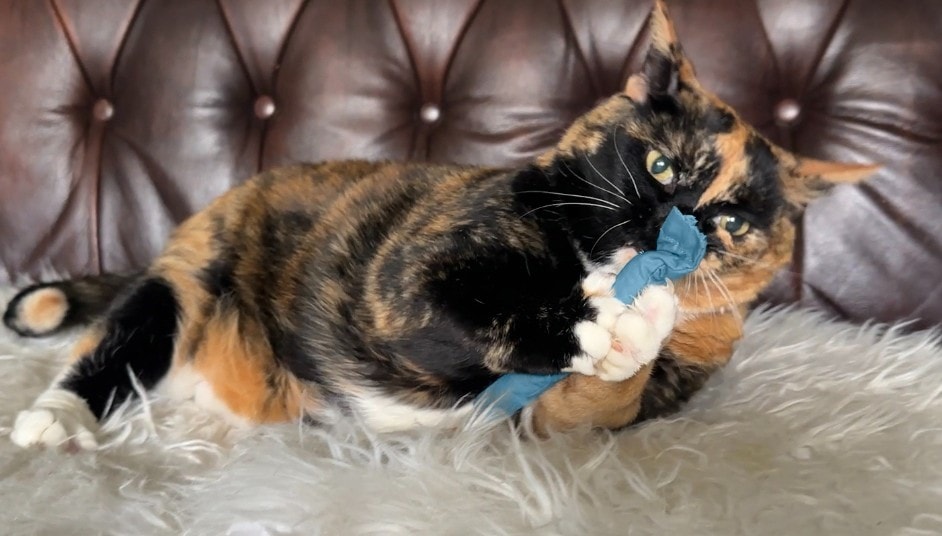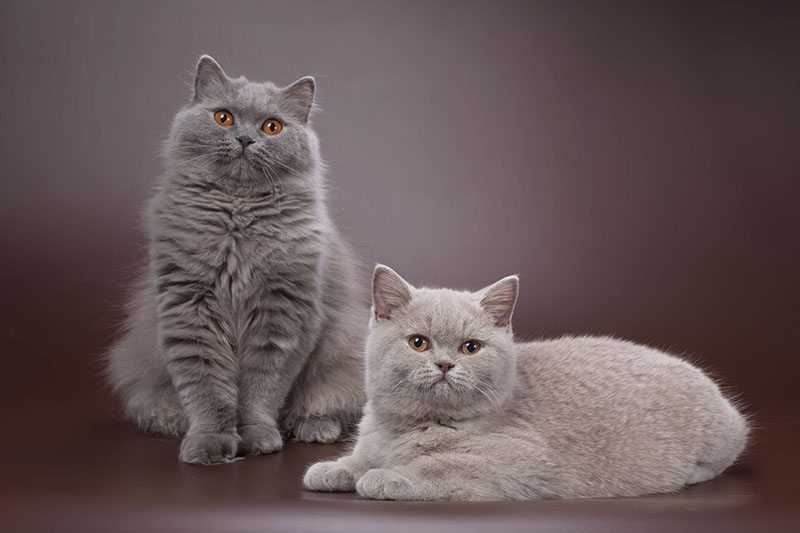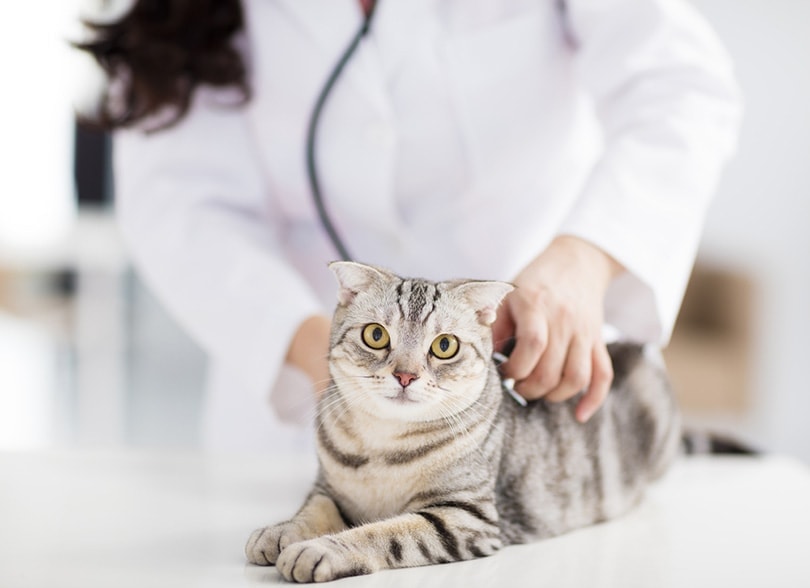Can Cats Eat Cactus? Will They Try to Eat One?

Updated on

If you are a cat owner that is considering purchasing a potted cactus plant, you may have some questions before making the final decision. Cacti are beautiful, unique plants that are very low maintenance and make a great decorative addition to your home.
We all know how our curious cats love to wreak havoc on our plants, so it is our responsibility as owners to know and understand the risks associated with certain houseplants. Below we will go over the safety of cactus and whether your cat can eat them. The short answer is that cactus is not toxic to cats. However, they can become injured due to the spines if they do try to eat a cactus. Keep reading to learn more about cats and eating cacti!
Cats and Cactus
The good news is that, unlike a number of other houseplants, the cactus is not toxic to our feline friends. However, they do have very sharp spines that can be quite the hazard for the most curious of cats. These spines can inflict injury, and cacti of the Opuntia, or Prickly Pear, genus are particularly more hazardous.
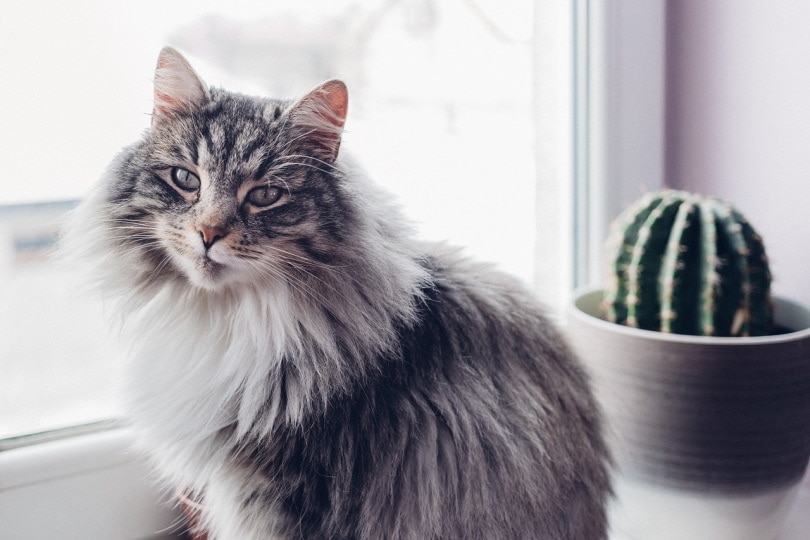
Can Cats Eat Cactus Fruit?
It is no secret that cactus plants are already set up to protect themselves. Interestingly, spines are derived from leaf tissue, thus giving them the status of modified leaves. In cacti, these spines are in place to protect them from being consumed by herbivorous animals.
Our cats may be carnivores, but as owners, we understand their carnivorous status does not always keep them from trying to chew on or eat plants. While the cactus fruit should not be fed to your cat, there is no reason to worry if they were to chew on your cactus and consume part of it, as it is nontoxic.
The biggest concern you should have about your cat chewing on your cactus is the potential injuries that could result from the spines. Keep in mind there are a wide variety of cactus species that are kept as indoor plants. Though none are considered toxic, it’s highly recommended to understand the species you are bringing into your home.
Why Can’t I Feed Cactus Fruit to My Cat?
Cats are obligate carnivores that get all their needed nutrition directly through the meat. Their digestive system is not designed for the consumption of any kind of plant material, including fruits and vegetables. Though a lot of commercial foods include fruits and vegetables in the ingredients and rave of the health benefits, they act more like a filler.
Cats cannot absorb the beneficial vitamins and nutrients from plants like omnivores and herbivores can, rendering plant material nutritionally insufficient for our kitties. That does not mean that small amounts of nontoxic fruits and vegetables will cause any harm if ingested; there is just no reason to offer it as a supplement to their diet.
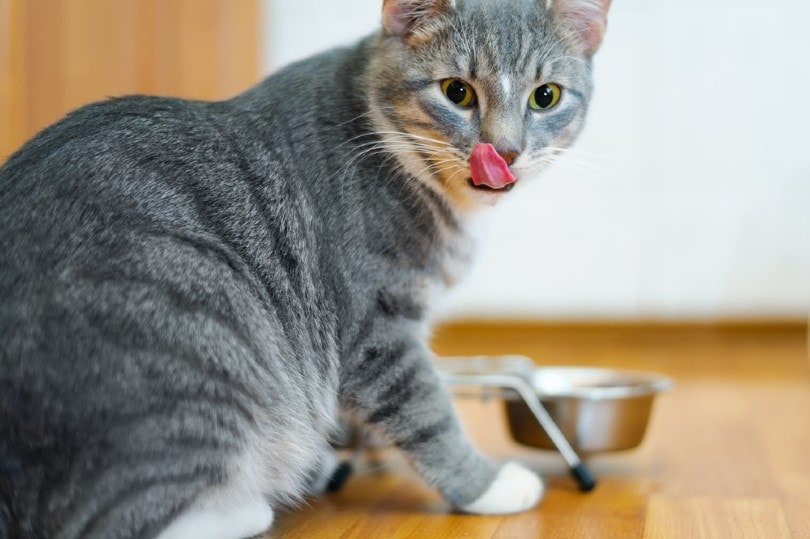
The 9 Most Common Indoor Cactus Plants
There are a wide variety of cacti that are kept as indoor houseplants. Thankfully, these beautiful plants do not require much of a green thumb, making them even more popular among those that require more low-maintenance houseplants. Below is a list of the most common cacti that are kept as houseplants:
Bunny Ears Cactus (Opuntia microdasys)
The Bunny Ears Cactus gets its name from its looks. This cactus is native to Mexico and is covered with brown colored prickles, known as glochids. They get 2 to 3 feet tall and will produce white flowers with purple fruits if they get enough exposure to natural light.
Chin Cactus (Gymnocalycium)
This South American species of cactus’ name means “naked calyx” in Greek. This is due to the absence of spines on their flower buds. There is a variety of chin cactus; some varieties thrive in sunlight while others prefer shade. They are known for being quite colorful and they thrive in windowsills.
Saguaro Cactus (Carnegiea gigantea)
The Saguaro Cactus is native to the Sonoran Desert and is one of the most recognizable species of cacti. While they can grow up to 40 feet once fully mature, this cactus grows very slow. A lot of plant owners will keep the Saguaro indoors for many years but will eventually have to move it outside once it becomes too large. This cactus does require a lot of sunlight.
Old Lady Cactus (Mammillaria hahniana)
Native to Central Mexico, the Old Lady Cactus is a flowering cactus with clustered stems covered with long white hair-like spines, hence the name “Old Lady.” It produces a halo of small pink or purple flowers when it blooms in the springtime.
Star Cactus (Astrophytum asteria)
Commonly referred to as the Sea Urchin Cactus or Sand Dollar Cactus, the Star Cactus has a round body and is sectioned into 8 different slices. This cactus only grows between 2 and 6 inches in diameter and is covered in tiny white hairs and tiny white dots. In the spring it will bloom a yellow flower.
Easter Cactus (Hatiora gaertneri)
This Brazilian native blooms in late winter and early spring. The flowers on the Easter Cactus vary from whites to oranges to lavenders. This cactus has a unique shape, and its spines are stacked on top of each other.
Christmas Cactus (Schlumbergera bridgesii)
The Christmas Cactus blooms in late winter and produces vibrant red flowers. This cactus is a common gift given for the Christmas holiday. It does well as an indoor plant and adapts well to moderate conditions and low lighting, though the blooms do best when exposed to more natural light.
Prickly Pear Cactus (Opuntia genus)
The paddle-shaped Prickly Pear Cactus is known for bearing edible fruits (if grown outdoors). There is a variety of Prickly Pear Cacti within the Opuntia genus, and they grow a bit differently when kept indoors and do require a lot of lighting. Be careful with these cacti, as the spines are quite sharp.
Ladyfinger Cactus (Mammillaria elongate)
This spiny Mexican cactus gets its name from its long, finger-like growths. This is a great cactus for beginners due to being low maintenance. The tubes form dense green and orange clusters, with light yellow or pink flowers that will bloom in the spring.
Most Common Toxic Houseplants for Cats
Bear in mind that houseplants do vary in levels of toxicity. While some may cause minor irritation, others can have serious and potentially fatal consequences. Before bringing a new plant species into your home, always contact your veterinarian for more information on the toxicity of that plant so that you can make the most informed decision and are prepared for possible effects the plant can have on your pets.
While this is not a complete list of toxic houseplants, this list does include some of the most common houseplants that have toxic effects on cats:
- Amaryllis (Amaryllis spp.)
- Autumn Crocus (Colchicum autumnale)
- Azaleas and Rhododendrons (Rhododendron spp.)
- Castor Bean (Ricinus communis)
- Chrysanthemum, Daisy, Mum (Chrysanthemum spp.)
- Cyclamen (Cyclamen spp.)
- Daffodils, Narcissus (Narcissus spp.)
- Dieffenbachia (Dieffenbachia spp.)
- English Ivy (Hedera helix)
- Hyacinth (Hyacintus orientalis)
- Kalanchoe (Kalanchoe spp.)
- Lily (Lilium sp.)
- Lily of the Valley (Convallaria majalis)
- Marijuana (Cannabis sativa)
- Oleander (Nerium oleander)
- Peace Lily (Spathiphyllum sp.)
- Pothos, Devil’s Ivy (Epipremnum aureum)
- Sago Palm (Cycas revoluta)
- Spanish Thyme (Coleus ampoinicus)
- Tulip (Tulipa spp.)
- Yew (Taxus spp.)
Now that you know what you can safely feed your cat, it’s just as important to find a bowl that supports their health and well-being. With whisker-friendly bowls and a wide tray to catch any spills, our Hepper NomNom Cat Bowl is our favorite option.
Conclusion
Cacti are not toxic to cats and should cause no alarm if they were to ingest part of the plant. Precaution should be taken for those curious kitties that like to harass and chew houseplants, as cacti have protective spines that could cause injury to your cat.
Cat owners should always research before bringing a new plant into the home, as cats tend to lick, chew, play with, and sometimes terrorize houseplants. This can be very dangerous if the houseplant is toxic to cats and other pets. While some plants have mild poisonous effects, others can cause serious harm and can even be fatal.
Remember to contact your veterinarian if your cat has ingested anything outside the norm or if they are suddenly exhibiting unusual symptoms. Your veterinarian can also give you more information on various plant life and their effects on pets.
See also:
Featured Image Credit: MonikaP, Pixabay


